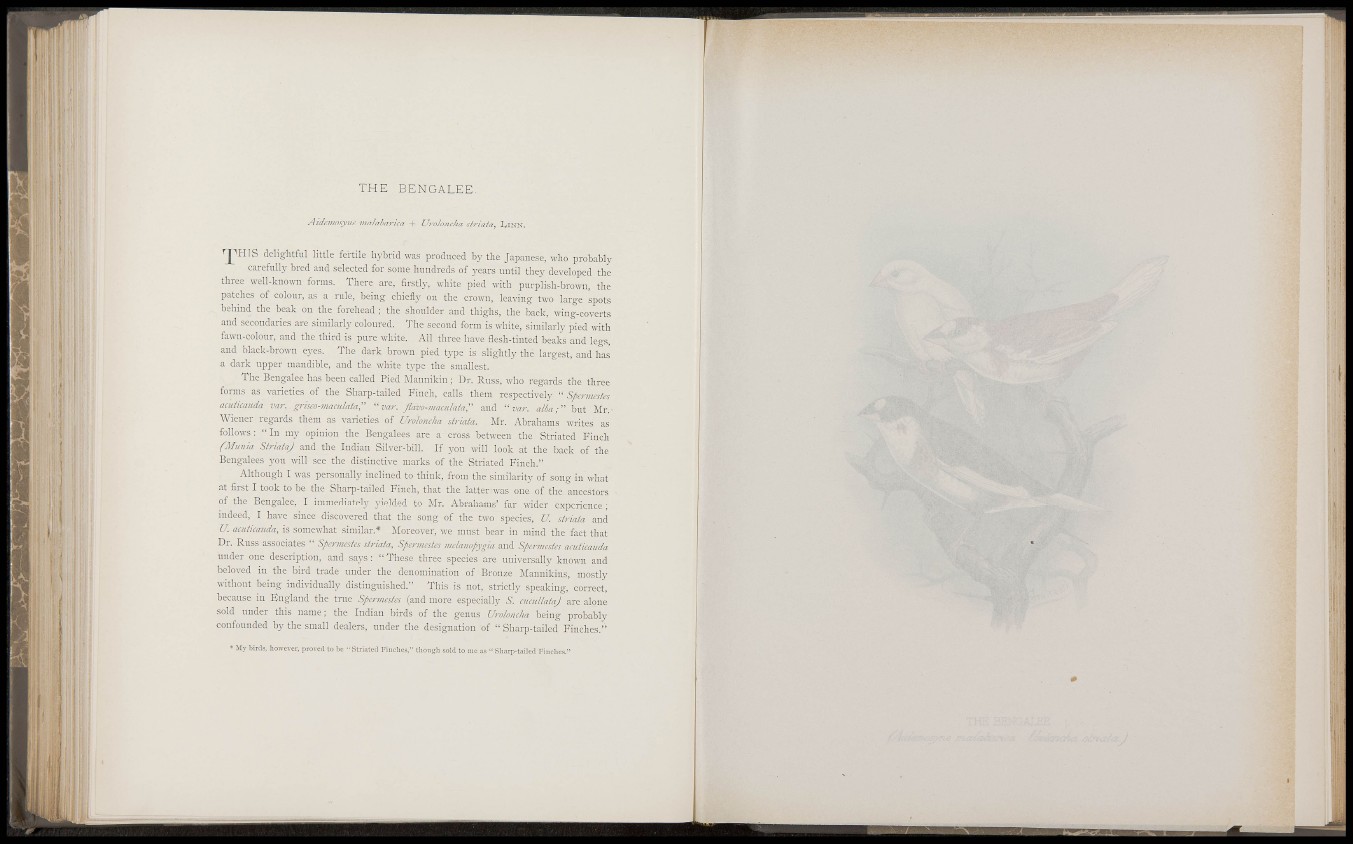
i'i • r
; 1-' : '
ll,, ' • i'' • i;. < i: II ::
T H E BENGALEE.
Aidcmosync nialabarica + Urolonclta striata, I^INN.
"' 'I » It i
I •
•J^^HIS delightful little fertile hybrid was produced by the Japanese, who probably
carefully bred and selected for some hundreds of years until they developed the
three well-known forms. There are, firstly, white pied with purplish-browu, the
patches of colour, as a rule, being chiefly on the crown, leaving two large spots
behind the beak on the forehead ; the shoulder and thighs, the back, wing-coverts
and secondaries are similarly coloured. The second form is white, similarl}- pied with
fawn-colour, and the third is pure white. All three have flesh-tinted beaks and legs,
and. black-brown eyes. The dark brown pied type is slightly the largest, and ha.s
a dark upper mandible, and the white t3'pe the smallest.
The Bengalee has been called Pied Maunikin ; Dr. Russ, who regards the three
forms as varieties of the Sharp-tailed Finch, calls them respectivel3^ " Spcnncstcs
acuHcauda var. griseo-maculata," " var. flavo-macn/ata," and " var. a/da;"hnt Mr.
Wiener regards them as varieties of Uroloncha striata. Mr. Abrahams writes as
follows: "In my opinion the Bengalees are a cro,ss between the Striated Finch
fMunia Striata) and the Indian Silver-bill. If you will look at the back of the
Bengalees 5'ou ^vill see the distinctive marks of the Striated Finch."
Although I was personally inclined to think, from the similarity of song in what
at first I took to be the Sharp-tailed Finch, that the latter was one of the ancestors
of the Bengalee, I immediately yielded to Mr. Abrahams' far wider experience;
indeed, I have since discovered that the song of the two species, U. striata and
U. acuticauda, is somewhat similar.* Moreover, we must bear in mind the fact that
Dr. Russ associates " Spen/iestcs striata, Spcniicstes metanopygia and Spcnncstcs acuticauda
under one description, and says: "These three species are universally known and
beloved in the bird trade under the denomination of Bronze :Mannikins, mostly
without being individually distinguished." This is not, strictly speaking, correct,
because in England the true Spcnncstcs (and more especially 5. cucidlataj are alone
sold under this name; the Indian birds of the genus Uroloncha being probably
confounded by the small dealers, under the designation of "Sharp-tailed Finches."
» My tjirds, however, proved to Ije " Striated Finclies," tlioiigh sold to me a,s " Sharp-tailed Finches."
MiiWilitMBiaiiii